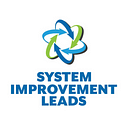Plan-Do-Study-Act…to Reopen Schools Effectively
By Brandon Bennett, Principal Advisor, Improvement Science Consulting
Just over a year since the global pandemic of COVID-19 forced school closures across the country, California is working hard to reopen. The challenge of meeting student needs while maintaining safety protocols, and getting it all done rapidly, is a daunting task for administrators and teachers alike. In many ways, reopening feels like just as much of a crisis in managing our education system as the transition to virtual learning environments did one year ago. At that time, I advocated for the use of learning cycles to quickly discover what works to meet emergent needs. Today, I am advocating for the same. Here are just three challenges schools are facing where rapid cycles of learning could be put to use to discover effective ways of supporting the system as it reopens safely:
- Disruptions to Student Success Teams — These teams, so critical to the identification of student need, have been badly impacted by both the transition to virtual learning and the transition back to in-person learning. Cohorting and schedule changes have created scenarios where Student Success Teams (SST) find it difficult or impossible to maintain a regular rhythm of meeting. Without functional SSTs, students are not being identified for interventions and assessments in a timely manner.
- Navigating a radically altered teaching environment — Our teachers are the backbone of the education system. For many, reopening means providing in-person and virtual teaching simultaneously. This presents all kinds of new and unexpected challenges: how to engage students in class and online at the same time, how to engage students in group learning processes while adhering to safety protocols, and how to ensure equitable participation across these learning environments. Instruction has taken on a whole new meaning.
- The coordination and staffing of substitute teaching — Reopening means many of the challenges which existed pre-pandemic, including the need for substitute teachers when staff are ill or out of the classroom, have been exacerbated. The preservation of safety is key and for many districts, that means figuring out new processes for staffing and supporting substitute (or guest) teachers as students come back to campus.
The list of reopening challenges goes on and on. The question remains, “how can our systems reopen safely and effectively and do so rapidly?” Improvement Science suggests one way to accomplish safe, effective and rapid reopening is through the regular use of the Plan-Do-Study-Act cycle. Very simply, this cycle is meant to provide a scaffold for the rapid trial and learning around ideas which might work to better support the system. An educator with an idea can use the scaffold to craft learning questions, make predictions, try the idea in practice and collect data on how well it works. This can be done quickly, often in less than a day. The educator can then decide, did this work? Should we do it again or implement it as a solution? If the answer is no, they can move on to a new cycle utilizing a different idea for how to manage the classroom or system. If the answer is yes, they can repeat the cycle for confirmation or under different conditions to see if it still works. Educators can document these rapid learning cycles on a PDSA form like this one to structure their learning and share their ideas with others.
Reconsidering the example challenges from above, here is what the use of PDSA might look like if practiced:
- Testing an SST “huddle” twice a week for 15 min (for a couple of weeks) rather than an extended meeting once a month, which is no longer possible due to schedule changes.
- Trying a student advocate role among online learners to serve as a reminder to the in-class teacher to check-in on or call on virtual learners for a couple of days to see if that helps improve virtual participation.
- Testing a new booking procedure for guest teachers, from communication of need to assignment to classrooms, for a week, to learn if needs are met and guest teachers are satisfied.
These are not prescriptive; they are simply ideas which could, and in some locations are already being tried, using the disciplined approach of PDSA. Their value can be learned quickly, adjustments made, and, ideally they will lead to a more supported environment for our staff and students as reopening continues.
Acknowledgments: The author would like to thank the System Improvement Leads (SIL) team members who provided deep insight into the challenges currently being experienced by our partners in County Offices, SELPAs, and districts across the state.
Interested in learning more about using PDSA cycles to support successful school reopening? Contact the SIL team at info@systemimprovement.org
